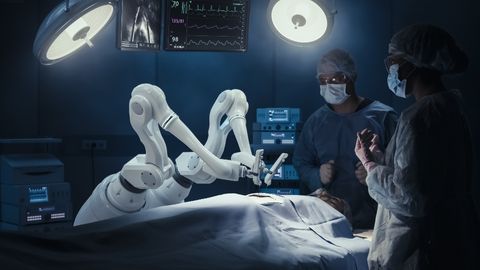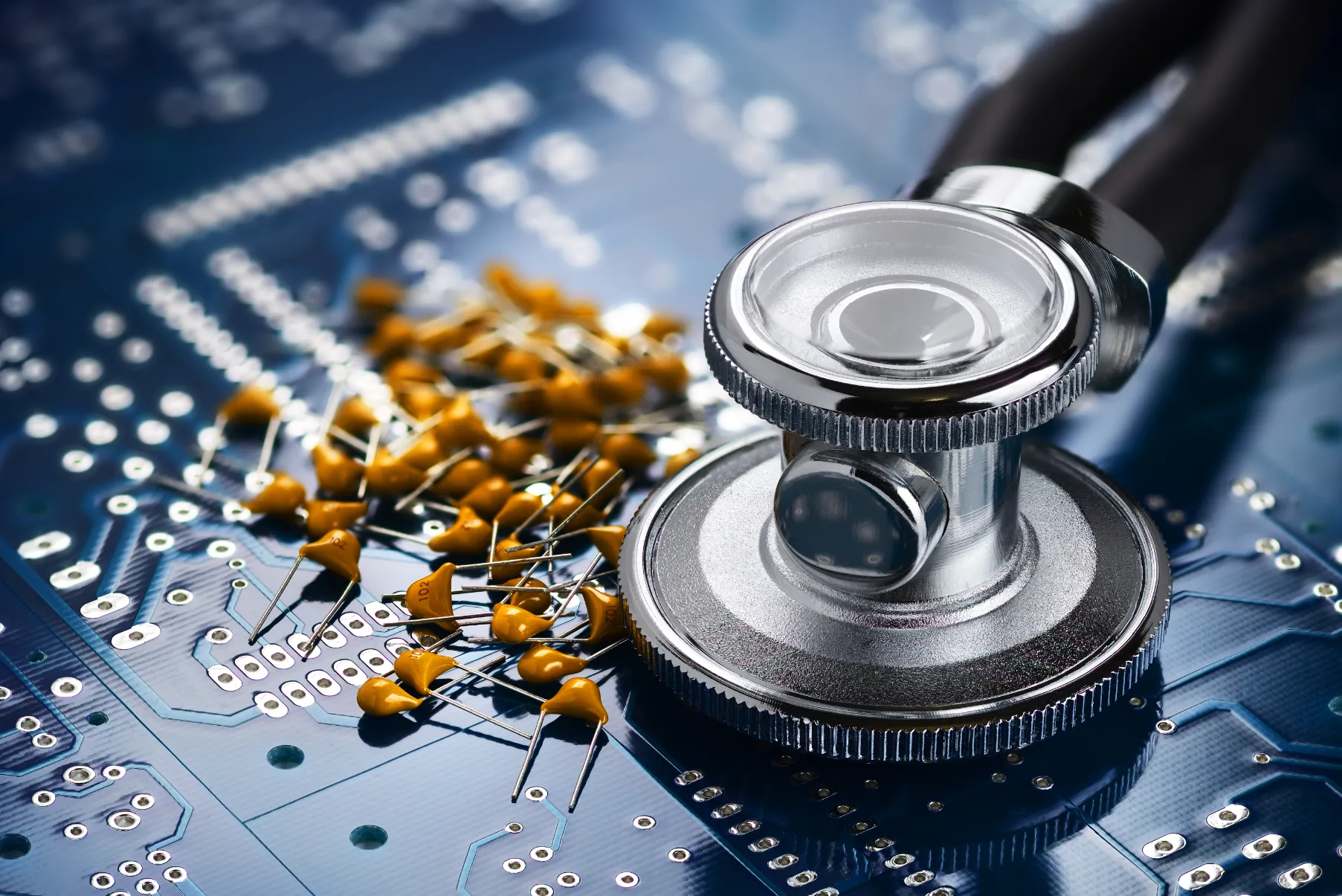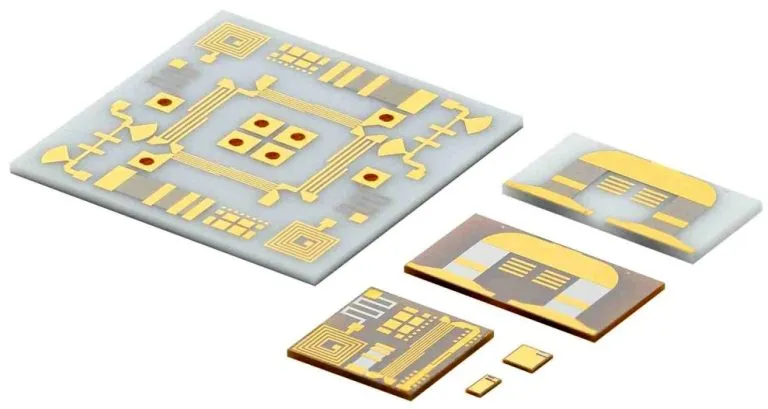In the fast-evolving world of medical technology, surgical robots are revolutionizing healthcare with precision and efficiency. A critical component behind their success is the printed circuit board (PCB) that powers these advanced machines. But what makes a PCB suitable for surgical robots? The answer lies in the materials used. High-performance materials like high-Tg PCB, Rogers PCB material, polyimide PCB, and ceramic PCB for medical applications are key to ensuring reliability, durability, and precision in these life-saving devices. In this blog, we’ll dive deep into how these surgical robot PCB materials enhance performance and why they are essential for modern medical applications.
Why PCB Materials Matter for Surgical Robots
Surgical robots operate in high-stakes environments where precision, stability, and reliability are non-negotiable. These robots rely on PCBs to control intricate movements, process real-time data, and communicate with other systems. A single failure in the PCB can lead to catastrophic results during a procedure. This is why choosing the right PCB materials is crucial. Advanced materials ensure that the boards can withstand harsh conditions, maintain signal integrity, and support the complex electronics required for robotic surgery.

Key Requirements for Surgical Robot PCBs
Before exploring specific materials, let’s look at the unique demands placed on PCBs in surgical robots:
- High Reliability: PCBs must function flawlessly under continuous operation to avoid disruptions during surgery.
- Thermal Stability: Surgical robots generate heat, and PCBs must resist thermal stress to prevent warping or failure.
- Signal Integrity: High-speed data transfer is essential for real-time control, requiring materials with low signal loss.
- Miniaturization: Compact designs are necessary to fit within the limited space of robotic systems.
- Biocompatibility: Materials must be safe for medical environments, avoiding toxic substances.
With these requirements in mind, let’s explore the advanced PCB materials that meet these challenges head-on.
High-Tg PCB: Withstanding Heat and Stress
High-Tg (glass transition temperature) PCBs are designed to handle elevated temperatures without losing structural integrity. The Tg value represents the temperature at which a PCB material transitions from a rigid to a softer state. For standard PCBs, Tg values typically range from 130°C to 140°C. In contrast, high-Tg PCBs offer Tg values of 170°C or higher, making them ideal for surgical robots that operate in demanding conditions.
In surgical robots, components like motors and processors generate significant heat. A high-Tg PCB ensures that the board remains stable, preventing issues like delamination or cracking. This thermal stability is critical during long procedures where consistent performance is vital. Additionally, high-Tg materials support multilayer designs, allowing for complex circuitry in compact spaces.
Key Benefits of High-Tg PCB for Surgical Robots:
- Enhanced thermal resistance for continuous operation.
- Improved mechanical strength to handle vibrations and stress.
- Reduced risk of failure in high-temperature environments.

Rogers PCB Material: Superior Signal Integrity
For surgical robots, maintaining high-speed signal integrity is essential for real-time data processing and precise control. Rogers PCB material, known for its low dielectric constant and low loss tangent, is a top choice for high-frequency applications. These materials are engineered to minimize signal loss and ensure consistent performance, even at frequencies above 1 GHz.
In practical terms, this means that a PCB made with Rogers material can handle the rapid communication between sensors, controllers, and actuators in a surgical robot. For example, a typical Rogers material like RO4350B has a dielectric constant of around 3.48 and a dissipation factor of 0.0037 at 10 GHz, ensuring minimal signal distortion. This makes it ideal for applications where split-second decisions are made during surgery.
Key Benefits of Rogers PCB Material:
- Low signal loss for high-frequency data transmission.
- Stable dielectric properties across a wide temperature range.
- Support for compact, high-density designs in robotic systems.

Polyimide PCB: Flexibility and Durability
Polyimide PCB materials are renowned for their flexibility and exceptional durability, making them a popular choice for surgical robot applications where space constraints and repeated movements are common. Unlike rigid PCBs, polyimide boards can bend and flex without breaking, which is ideal for robotic arms and joints that require dynamic motion.
Polyimide materials also offer excellent thermal and chemical resistance. They can operate in temperatures ranging from -200°C to 300°C, ensuring reliability in extreme conditions. In surgical robots, polyimide PCBs are often used in flexible circuits that connect moving parts, maintaining performance even after thousands of cycles of bending and twisting.
Key Benefits of Polyimide PCB:
- High flexibility for dynamic and compact designs.
- Superior resistance to heat and chemicals.
- Long-term durability for repeated use in robotic systems.
Ceramic PCB for Medical Applications: Precision and Reliability
Ceramic PCBs are gaining traction in medical applications due to their outstanding thermal conductivity and electrical insulation properties. Unlike traditional FR-4 materials, ceramic PCBs use substrates like alumina (Al2O3) or aluminum nitride (AlN), which can dissipate heat up to 10 times more effectively. For instance, alumina ceramics have a thermal conductivity of around 20-30 W/mK, compared to just 0.3 W/mK for FR-4.
In surgical robots, where heat dissipation is critical to prevent component failure, ceramic PCBs excel. They also provide excellent dimensional stability, ensuring that the board does not warp under stress. Additionally, ceramic materials are biocompatible and non-toxic, making them safe for medical environments.
Key Benefits of Ceramic PCB for Medical Applications:
- Exceptional heat dissipation for high-power components.
- High electrical insulation for safety and reliability.
- Biocompatibility for use in medical devices.

Comparing Surgical Robot PCB Materials
Each of these materials has unique strengths, and the choice depends on the specific needs of the surgical robot. Here’s a quick comparison to guide engineers in selecting the right material:
| Material | Thermal Stability | Signal Integrity | Flexibility | Best Use Case |
|---|---|---|---|---|
| High-Tg PCB | Excellent | Moderate | Low | High-heat environments |
| Rogers PCB Material | Good | Excellent | Low | High-frequency data transfer |
| Polyimide PCB | Excellent | Moderate | Excellent | Flexible, dynamic components |
| Ceramic PCB | Excellent | Good | Low | Heat dissipation, biocompatibility |
How to Choose the Right PCB Material for Surgical Robots
Selecting the appropriate PCB material involves balancing performance requirements with design constraints. Consider the following factors:
- Operating Environment: Will the PCB be exposed to high heat or chemicals? High-Tg or ceramic materials might be the best fit.
- Signal Speed Needs: For high-speed data processing, prioritize materials like Rogers for low signal loss.
- Space and Flexibility: If the design requires bending or tight spaces, polyimide PCBs are ideal.
- Budget Constraints: While advanced materials offer superior performance, they often come at a higher cost. Weigh the benefits against the project budget.
Collaboration with a trusted PCB supplier can also help in making an informed decision. At ALLPCB, we provide expert guidance and high-quality materials tailored to the unique demands of surgical robots.
Future Trends in Surgical Robot PCB Materials
As surgical robots become more advanced, the demand for innovative PCB materials continues to grow. Emerging trends include:
- Hybrid Materials: Combining properties of different substrates, such as ceramic and polyimide, for enhanced performance.
- Nano-Coatings: Adding protective layers to PCBs to improve resistance to moisture and contaminants in medical environments.
- Sustainable Options: Developing eco-friendly materials that maintain high performance while reducing environmental impact.
Staying ahead of these trends ensures that surgical robots remain at the cutting edge of medical technology, delivering better outcomes for patients worldwide.
Conclusion: Building the Future of Surgical Robots with Advanced PCBs
The success of surgical robots hinges on the quality and performance of their PCBs, and choosing the right materials is the foundation of that success. High-Tg PCB, Rogers PCB material, polyimide PCB, and ceramic PCB for medical applications each offer unique advantages, from thermal stability and signal integrity to flexibility and biocompatibility. By understanding the specific needs of surgical robots and leveraging these advanced materials, engineers can design systems that are more reliable, durable, and precise.
At ALLPCB, we are committed to supporting the medical industry with top-tier PCB solutions. Whether you’re developing the next generation of surgical robots or optimizing an existing design, our expertise and high-quality materials are here to help you succeed. Let’s build the future of healthcare technology together.



